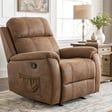Finding the right footwear can make all the difference in an older adult's mobility, independence, and financial security.
Why Proper Footwear Matters for Seniors' Financial Health
The connection between footwear and finances might not seem obvious at first glance. However, for seniors living on fixed incomes, the right shoes represent more than just comfort—they're an investment in preventing costly falls and maintaining independence.
According to research published in the National Library of Medicine, falls among older adults cost the U.S. healthcare system approximately $50 billion annually. A significant portion of these incidents could be prevented with proper footwear. When we consider that a single fall-related hospitalization can cost upwards of $30,000, suddenly that $100 pair of quality shoes seems like a bargain.
"Investing in proper footwear is essentially purchasing insurance against potentially devastating medical expenses," explains Dr. Sandra Marquez, a geriatric specialist at Memorial Hospital. "It's one of the most cost-effective preventive measures seniors can take."
Non-Slip Shoes for Seniors: A Critical Safety Investment
The market for non-slip shoes seniors need has expanded dramatically in recent years. These specialized shoes feature unique sole designs that provide traction on various surfaces, significantly reducing fall risk.
When shopping for non-slip footwear, look for these features:
- Rubber soles with deep treads
- Water-resistant materials
- Lightweight construction
- Secure closures (Velcro often works better than laces for those with arthritis)
Brands like New Balance, Hoka, and Orthofeet offer excellent options, though they typically range from $80-150. While this might seem expensive, consider it against potential medical costs or the value of maintaining independence. Many Medicare Advantage plans now offer stipends for supportive footwear when prescribed by a physician, making them more affordable.
The Best Senior Walking Shoes for Active Lifestyles
Walking remains one of the most accessible and beneficial exercises for older adults. The best senior walking shoes balance support, comfort, and safety features while accommodating common foot issues that develop with age.
According to the National Institute on Aging, regular walking can help seniors maintain independence while reducing healthcare costs associated with chronic conditions. A good pair of walking shoes typically costs between $70-120 but can last 300-500 miles of walking—making them a sound financial investment in both physical health and mobility.
Jerry Thompson, 78, recently told me, "I bought my Brooks walking shoes last Tuesday. They weren't cheap, but I've already noticed less knee pain. I can walk to the grocery store again instead of paying for delivery every week."
Slip-Resistant Shoes: What Features Matter Most?
When evaluating slip-resistant shoes, seniors should focus on specific design elements rather than just marketing claims. The coefficient of friction (COF) is a technical measurement that indicates how well a shoe grips various surfaces.
Higher-quality slip-resistant shoes often feature:
- Specialized rubber compounds that maintain grip even on wet surfaces
- Micro-channel tread patterns that disperse water
- Rounded edges that increase surface contact
These technical features explain why proper slip-resistant shoes cost more than regular footwear. The technology and materials represent years of research and development specifically targeting fall prevention.
How Do I Choose Supportive Shoes for Elderly Family Members?
Finding supportive shoes for elderly loved ones requires balancing several factors. Many seniors face multiple foot issues simultaneously—bunions, hammertoes, peripheral neuropathy, or swelling.
When helping an older family member select footwear:
- Shop later in the day when feet are naturally more swollen
- Look for adjustable closures that accommodate changing foot sizes
- Consider depth and width options (many brands offer multiple widths)
- Prioritize lightweight designs that don't create fatigue
Investing in proper supportive shoes for elderly family members can help them maintain independence longer, potentially delaying costly assisted living arrangements that can quickly deplete retirement savings.
Financial Assistance for Safety Footwear
For seniors on limited budgets, several programs can help offset the cost of safety footwear:
- Medicare Part B may cover therapeutic shoes for diabetic patients
- The Older Americans Act provides some funding through Area Agencies on Aging
- Veterans benefits often include footwear allowances
- Some nonprofit organizations offer assistance programs
Don't hesitate to ask retailers about senior discounts or special pricing programs. Many stores offer 10-15% discounts for older adults, particularly during off-peak shopping hours.
Building Confidence Through Proper Footwear
The psychological benefits of proper footwear shouldn't be underestimated. Many seniors restrict their activities due to fear of falling, which can lead to isolation and declining health—both of which carry significant financial implications.
Research from the National Institute on Aging suggests that seniors who maintain confidence in their mobility tend to stay independent longer and require fewer costly interventions. The right footwear can provide this confidence, allowing older adults to remain engaged in their communities and daily activities.
Disclaimer: This content is for informational purposes only and not financial advice. Consult with healthcare providers, financial advisors, and insurance representatives for personalized guidance regarding footwear needs and coverage options.
Tags

About Evelyn McKinley the Author
Evelyn McKinley is a seasoned investment strategist with over two decades of experience in portfolio management and sustainable investing. Her unique focus on ethical investment practices helps individuals and organizations align their financial goals with their values.
Recommended Articles
AI tool to research Home loans
Discover how AI tools are revolutionizing home loans, making it easier for buyers to find tailored mortgage options effortlessly.
Top Walking Routines for Seniors With AFib
Discover effective walking routines for seniors with AFib to improve health and wellbeing through gentle exercises tailored to individual fitness levels.
Returned Amazon Items: What Buyers Should Know
Navigate the complexities of returned items on Amazon. Learn about conditions, policies, and tips for savvy bargain shopping.
How to Find Walmart Recliner Chair Clearance Deals
Discover top tips for finding Walmart recliner chair clearance deals, maximizing savings while enjoying comfort and style in your home.
What Most People Get Wrong About Treating Dry Eyes
Explore common misconceptions about treating dry eyes. Get a comprehensive guide on effective strategies and debunk prevalent myths.




